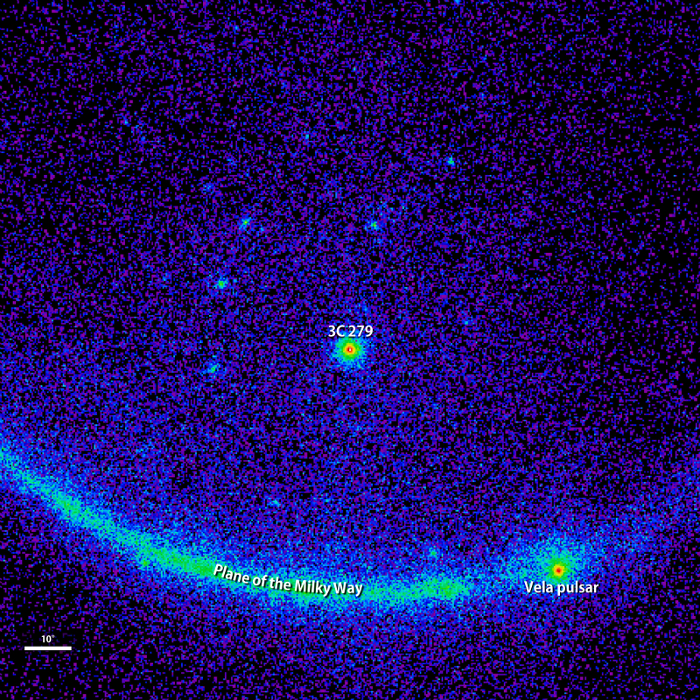
 Credit: NASA/DOE/Fermi LAT Collaboration
Credit: NASA/DOE/Fermi LAT Collaboration
A Black Hole Ablaze
Active
galaxies have voracious, central supermassive black holes with masses
equivalent to millions or billions of Suns crammed into a space the size of our
solar system. These supermassive black holes are feasting from a cosmic
smorgasbord of galactic matter (clouds of gas and dust, and perhaps stars and
other objects). As this material falls towards the black hole's event horizon (never to be seen
again), it emits an enormous quantity of energetic radiation extending all the
way up the to the Gamma-ray
band, sometimes producing a narrow jet of
particles shooting from the black hole for millions of light years into
intergalactic space as well. Blazars are particularly
extreme types of active galaxies, highly luminous, highly energetic and highly
variable. Astronomers believe that the extreme behavior of blazars is a simple
consequence of the orientation of the jet from the central black hole, which,
for these galaxies, just happens to be pointing at earth. This gives us a good
view down the barrel of the jet and the unstable, powerful emission that it
produces. The image above is a Gamma-ray image of a large portion of the sky in
June, 2015, obtained by the Large Area
Telescope on the Fermi
Gamma-ray Space Telescope. This image shows a bright Gamma-ray flare from a
well-known blazar called 3C
279. As LAT discovered, during a few days last June, 3C 279 became as bright
as the brightest Gamma-ray source, the Vela Pulsar, despite the fact that 3C 279
is millions of times more distant than the pulsar. The short Gamma-ray flare
from 3C 279 suggests that a powerful disturbance occurred in a very small region
near the supermassive black hole. Astronomers are still not sure what caused
this outburst, or when or if it will happen again.
Published: April 9, 2018
<
HEA Dictionary ● Archive
● Search HEAPOW
● Other Languages
● HEAPOW on Facebook
● Download all Images
● Education ● HEAD
>

Each week the HEASARC
brings you new, exciting and beautiful images from X-ray and Gamma ray
astronomy. Check back each week and be sure to check out the HEAPOW archive!
Page Author: Dr. Michael F. Corcoran
Last modified Monday, 26-Feb-2024 17:09:32 EST


